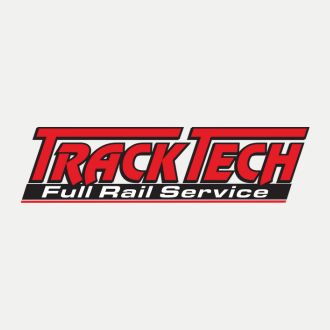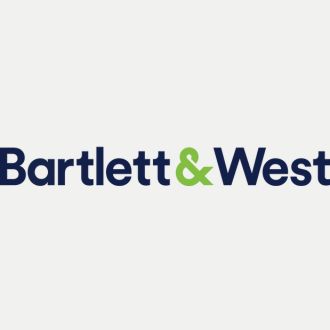Site Readiness for Rail-Served Industrial Development
Introduction
Site selection is a critical factor in the success of industrial projects. Businesses seeking to expand or establish new facilities must carefully evaluate potential locations based on many factors, often employing a multi-criteria decision-making process. Factors usually evaluated and weighted include location, property size, infrastructure availability, utility capacity, transportation access, environmental impacts, the local labor market, and incentives. Site selectors often leverage certified industrial sites to minimize risk and accelerate speed-tomarket. These "shovel-ready" sites are typically zoned and permitted for industrial development and have met other crucial criteria. However, these models may not adequately evaluate rail service due to the generalities associated with the various site certification programs. Rail-served sites offer cost-effective and efficient freight logistics, making them highly desirable locations for particular industries. Each railroad has its own process and standards, so it is imperative that customers engage with the respective servicing railroad to understand and adhere to them. This paper will explore the importance of investigating rail access during site selection, highlighting key design considerations that impact feasibility, efficiency, and long-term functionality.
Rail access may be critical in an industrial customer's site selection process, influencing logistics, operational efficiency, and long-term business viability. When evaluating a site for potential rail service, industry experts consider several key factors, including proximity to a mainline, service frequency, infrastructure constraints, and regulatory compliance. Understanding the engineering fundamentals of rail-served site readiness is essential for project success, as not all sites are created equal. Proper planning and evaluation minimize costly modifications, maximize operational efficiency, and improve long-term adaptability for growing businesses.
Physical Characteristics of Rail-Served Sites
The Property
Rail-served sites come in a variety of shapes and sizes. A site with a relatively short sidetrack and enough property for truck access may be suitable for transloading operations. Transloading is simply a location whereby a customer transfers between a railcar and, most commonly, a truck. Such sites may occupy less than a half-acre. A small warehouse (less than 150k sq. ft.) with rail may occupy less than ten acres. Meanwhile, a facility receiving unit trains (a train with a single commodity type moving from Point A to Point B, typically around 80 to 120 cars per train) will require approximately 100 acres. Therefore, the minimum property size depends on the infrastructure needed, both buildings and rail.
Another key characteristic of rail access is the property's orientation. In most cases, a rectangular property parallel to the connecting railroad is often the most efficient. This layout provides the most frontage and minimizes curves, thus minimizing the total track needed. At times, if space is challenging, the serving railroad may be able to lease property along their right of way to accommodate customer-owned tracks. However, if the property is more perpendicular to the railroad, there is less frontage to work with. In such cases, customers often seek to curve rail into the property. Minimizing railroad curves is desirable from an operating and design perspective; they usually consume more property than expected, resulting in wasted space and additional necessary track footage. Once an appropriate property is identified, the next step is ensuring it meets key design constraints for efficient rail service.
Horizontal Design Constraints
Each railroad has its specifications for the design of industrial sidetracks, which must be adhered to. A well-designed rail-served site must meet these specific requirements to accommodate rail operations safely and efficiently. For example, a typical minimum rail corridor is approximately 25 feet. However, grading and ditching can easily require a much wider path. Additionally, railroads have horizontal clearance requirements for structures, fences, poles, and other railroad tracks. The serving railroad's standards, and often state law, dictate those clearance requirements. Failing to account for adequate clearances can lead to costly redesigns and safety concerns.
As previously mentioned, one should avoid curves when possible. Trains cannot navigate curves like vehicular traffic can. A tractor-trailer’s typical turning radius is approximately 60', but a train's is closer to 500'. Making a 90-degree turn with rail will take up considerably more space than vehicular traffic requires. Thus, when possible, having the proposed rail run parallel to the serving railroad helps minimize wasted space.
Vertical Design Constraints
Site topography plays a significant role in rail design. The maximum allowable rail grade typically falls within 2-3%, though horizontal track curvature may further limit permissible grades. Maintaining a level track profile in key operational areas is crucial, as sections where railcars are placed for loading and unloading must maintain a 0% grade. Grade changes also require the presence of vertical curves. Turnouts, railroad structures that permit movement from one railroad track to another, are not allowed in either vertical or horizontal curves. Therefore, relatively flat properties relative to the serving railroad's elevation are ideal because they minimize the need for heavy grading and reduce vertical curves.
Vertical clearance is another vital factor. Railroads have minimum clearance requirements for overhead obstructions like wirelines, building doors, and other over-the-track structures. It is crucial to refer to the specifications of the railroad serving and state law to ensure compliance. Underground clearance requirements exist for pipelines, fiber optics lines, drainage structures, and other underground items. Crossing underground utilities may require relocation or encasement of the utility, resulting in additional construction costs. Ignoring these constraints can create compliance issues and hinder future site development.
Site-Specific Challenges
Beyond basic dimensions, several other site constraints must be evaluated. Environmental considerations such as wetlands and protected areas may limit site development or require mitigation measures. It is imperative to assess permitting impacts that may pose lengthy delays. Early collaboration with environmental consultants and regulatory agencies is beneficial. Existing infrastructure (utilities, bridges, at-grade road crossings) can also pose physical barriers to rail integration and additional costs. Proper planning of building orientation will optimize space usage and facilitate rail access, with structures ideally positioned parallel to the mainline. A comprehensive evaluation of these factors early in the planning process ensures a more efficient, cost-effective, and seamlessly integrated rail-served site.
Operating Considerations
Successful rail-served sites require careful operations planning to maximize efficiency and long-term viability—factors such as mainline density, traffic volume, and service frequency impact the site design and infrastructure needs. Facilities must have adequate track length and storage capacity to accommodate expected rail volumes based on service frequency. Efficient switching operations help reduce delays and costs, with dedicated tracks for different commodities and separate tracks for inbound and outbound shipments, enhancing logistics. Drop-and-swap operations can minimize dwell times, improving overall efficiency. Hazardous materials (hazmat) shipments introduce additional complexity, necessitating specialized infrastructure and compliance with federal safety regulations. Additionally, successful sites anticipate future growth, incorporating extra storage capacity for railcar bunching or missed switches. Sites that rely on third-party or customer switching benefit from additional track flexibility, ensuring seamless rail movements within the facility. Rail-served sites can achieve greater efficiency, reliability, and adaptability over time by integrating these operational considerations early in the planning process.
Conclusion
Rail-served site readiness is a multifaceted process that requires careful planning and collaboration with industry experts. Key engineering considerations—including horizontal and vertical constraints, operational planning, and long-term flexibility—determine a site's viability and efficiency. By adhering to best practices and avoiding common pitfalls, industrial developers can create rail-served sites that meet both immediate operational needs and future growth demands. Engaging with rail professionals early in the site selection and design process ensures smoother project execution, cost savings, and a more competitive logistics network. Site selection officials should engage early and often with the serving railroad's Industrial Development representative who can advise on the railroad's specific design standards, needs, and operational nuances to ensure the site meets the customer's and railroad's requirements. A proactive approach to site readiness paves the way for successful industrial development, benefiting rail carriers and their customers.










